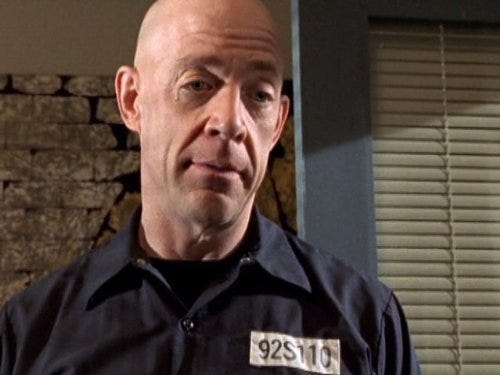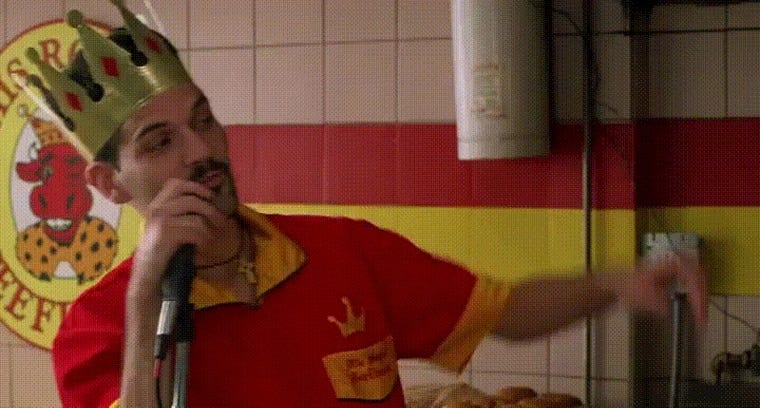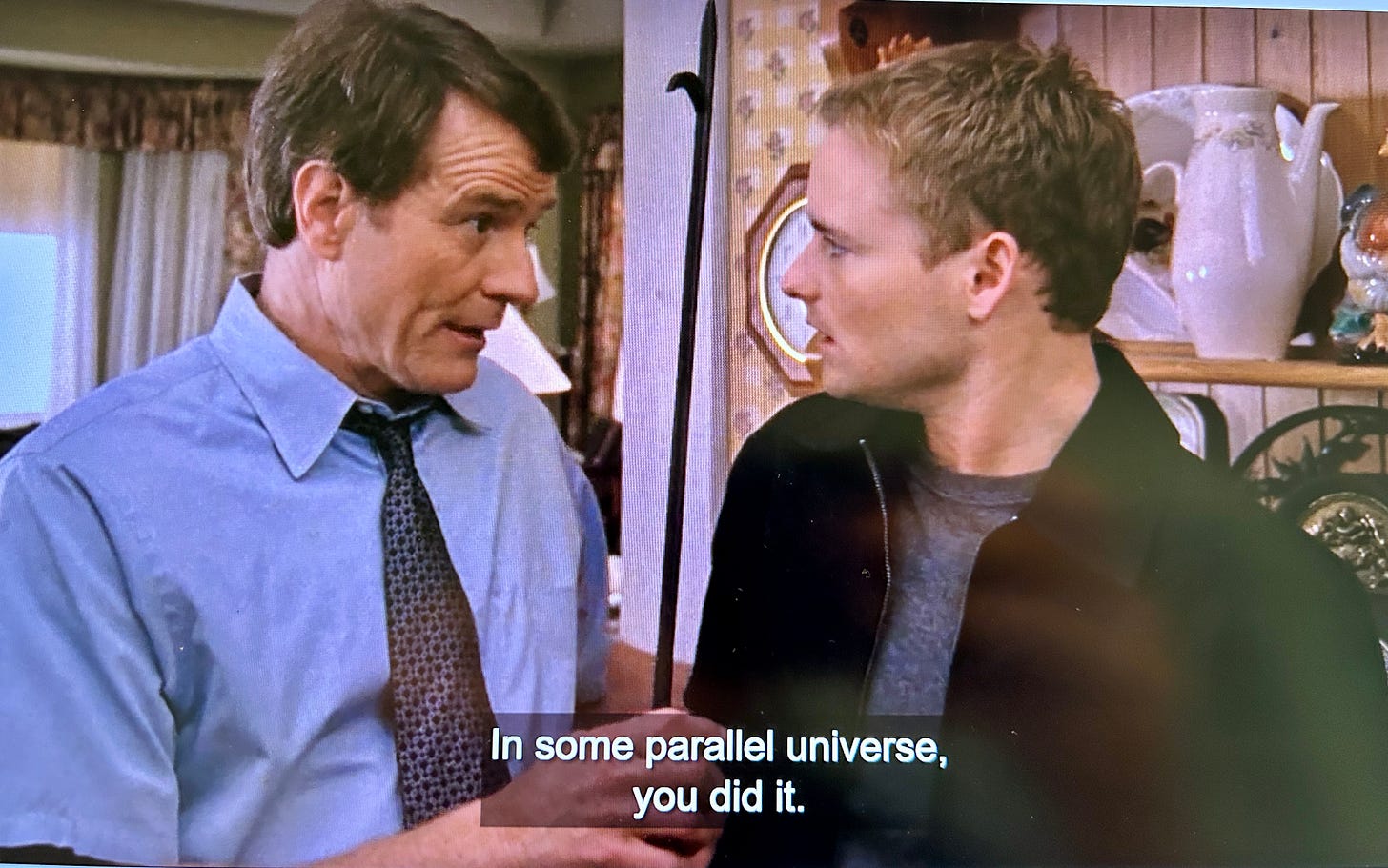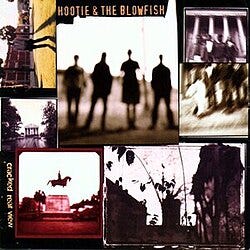Toxicity 101: Should I Stay or Should I Go?
There's multiple types of toxicity at work; some rare situations may be worth sticking out from a learning perspective.
We tend to speak about toxic workplaces as that rare form of a terrible job - whether it’s the circumstances, the people, or systemic issues bubbling to the surface like discrimination or harassment. But the reality is that toxic workplaces are much more common than our annual anti-harassment training might have us believe, and even more common is their toleration within the white collar workforce.
There are a few reasons for this, but (surprise, surprise) most of them boil down to a capitalistic pursuit of money: if the revenue is flowing in a toxic environment, very few leaders are willing to mess with quarterly numbers to remedy said toxicity. Toxic workplaces almost always end up self-immolating at some point, but the lead-up to the revenue risk usually isn’t clear, which is why the toxicity in and of itself should be a red flag for cash flow (even if it rarely is.) Regardless, it’s usually best to cut and run when confronted with a toxic workplace - but are there any situations in which working through this toxicity might actually benefit someone later on in their career?
The Obvious “Peace Out” Moments
There are toxic environments where the solution of leaving is so obvious it doesn’t warrant a debate - internal, or otherwise. Cases of physical abuse, sexual abuse and harassment, and obvious signs of mental health deterioration are signs that it’s time to leave, regardless of whether you have something else lined up.
This newsletter recognizes that this is a privileged take, as there are plenty of folks without much of an option thanks to the system Americans find themselves in which health care (a human right) is centered through your ability to be employed (a purely capialistic venture.) Still, it is worth noting that no one should be subject to the above issues to simply pull a paycheck.
Are There Situations Where Toxicity Itself is Good?
No. Absolutely not. Not in this physical realm or any and all realms that exist in parallel to this one. Toxicity is not good. Full stop.
That said, we always have to manage reality vs. the ideal state. My kids should listen, but they don’t, so I have to deal with that. RTO has no discernible effect on financial outcomes, but it’s still mandated, so I have to deal with that. Toxic workplaces shouldn’t exist, but they do in large numbers. So we have to deal with that.
If we speak broadly, there are two kinds of toxic environments - one in which an employee could potentially emerge from it with better skills and abilities, and one in which they simply are broken down by it and come out worse for wear. The main difference between the two comes in the form of how respect is divied out within the toxic environment.
Just Throw Money at the Problem
Toxic environments that aren’t prima facie dangerous tend to share some of the same characteristics:
Culture of negativity and pessimism;
Impossible deadlines;
Perfectionism - Good work doesn’t count if it’s not perfect;
Constant criticism with little to no praise.
There are others - the list is quite long, but from personal experience, the above make up a majority of the variables when it comes to toxic workplaces.
When in client services, there’s a two-fold aspect to this which can complicate things a bit. You have your internal team at the agency and cross-capability folks you work with, and then you have your client team. I’ve seen a couple of setups (from most common to least common): toxic clients with toxic agency team, toxic clients with good agency team, and good clients with a toxic agency team.
The aspect of services for hire adds a money-flow issue. The best clients are the ones that collaborate as equals with their agency teams - working through recommendations, diving into the numbers with them, and sitting side by side (either metaphorically or physically.) But the opposite of that - the transactional-based utility attitude vs. one of collaboration - is where toxicity begins to take hold. This is not just agency life - ask a lawyer, a tradesperson, a sell-side banker, and they will all readily regale you with tales of toxic clients that they would never work for again.
One of my first clients when I jumped to agency life embodied this toxicity. Late nights, decks with rounds and rounds of edits due to last-minute shifting asks, dreading going to presentation meetings because you knew you were there to get spoken to like an incompetent moron so someone else could save face. It was exhausting and stressful, and I would not suggest doing it to anyone.
But paradoxically, when I look back on my (admittedly short thus far) career, it was those first years that catalyzed my learning. I was coming into an industry I did not know with tools I’d not really used and had to not only play catch up in that realm, but also against a client who seemed to almost revel in the chaos.
This romanticized backward-looking view I maintain was largely due to the team I was on at the agency - a group of people who were mission-focused, collaborative, and drove a spirit of camaraderie that made the late nights more bearable. In fact, many of this group continue to work together, and that shared trauma remains a foundational piece of our experience together. Once we all moved on from that toxic account, we were able to drive even more value on accounts that had stability and team attitudes, and I am convinced those tough times made us all better employees.
Find Out What It Means To Me
And the single common denominator was respect. This entire post came from a movie I had playing in the background as I took advantage of Delta and T-Mobile’s fast and free wi-fi to work on a flight back from a client visit (have I mentioned we need sponsors?)
Whiplash stars baby-faced Miles Teller, a jazz drumming prodigy, who is put through the absolute ringer by JK Simmons’s abusive and toxic teaching style for his band at a fictional elite music conservatory in New York. I don’t want to give too much of the plot away, but one question I kept coming back to was why did his student not only tolerate Simmons’ abuse, but seek it out?

It was because they respected him - Simmons and the students believed that his style was bringing the best out of them in a “pressure makes diamonds” kind of way. Simmons went way too far in the film (the direction given to Simmons was to make his character no longer a human, but a monster, and he nailed it), but the idea that the toxicity accelerated the growth and the learning of the students actually holds weight, if this newsletter’s experience is any indication.
So given that, what should you do if you find yourself in a toxic situation but have respect for the team you’re with or believe the toxicity, rather than being dangerous, may actually serve as an uncomfortable learning experience? First, you have to ask yourself if it’s worth it - those remaining in these situations should be doing so with eyes wide open. What is the goal of staying, and are those benefits clear?
Seek out a mentor (preferably on the team, but someone with some context for the situation) and ask them. Bring them your thoughts about what you want to achieve by sticking it out. Confirm with them that your goals and rewards are realistic. Then ask them how they deal with toxicity to get some tips, because part of the learning in a toxic work situation is understanding the internal processes necessary to remain calm amidst a shitstorm.
Limit Exposure and Make It Better Behind You
If you do decide to stick it out, keep an eye on the clock. Eighteen to 24 months is likely the max someone can stick out a super toxic situation and remain unscathed. That doesn’t necessarily mean you need to switch accounts - clients come and go, as do agency leaders driving toxicity, so an external resolution could keep you in the same spot with a better outlook.
And if you do gain the experience and fast knowledge you’re looking for, you have a responsibility to avoid the very same toxicity for those behind you. Whether it’s trying to make current situations better, or recognizing toxicity when you become a leader and doing everything in your power to minimize it, the only way to stop the cycle is to be a part of the solution. Sitting on the sidelines watching teams suffer from the same toxicity you did years ago and doing nothing to combat it likely means you didn’t learn as much as you should have from the experience. Always send the elevator back down.
Grab Bag Sections
WTF Airbus: If you know me, you know I’m a bit of a transport nerd - you can make whatever kind of conclusions from that as you want. Irrespective of your diagnoses, I’ve had the pleasure of cruising at altitude on two separate Airbus fuselages in the past two weeks. The first was an Airbus A321-Neo (one of the gems of Airbus’s fleet, and one advertised as a bigger jet) and the second was the smaller 5-wide configuration of the Airbus A220.
The first trip I was traveling transcon on an A321-Neo with the family, and my son decided the way he was going to get his exercise was hourly trips to the lavatory. The bathrooms on these jets are miniscule - if I were by myself I would be cramped, so you can imagine how it went with me and my 90th percentile-in-everything toddler. Brutal stuff. I think we burned his clothes when we landed given the amount of brushing up against things that occurred in that bathroom.
So when I had to use the lavatory on the solo flight I had this past week on the A220 I braced myself for an even smaller loo given the smaller jet. On regionals, I have to crank my neck simply to stand in there, so I was thinking the same situation would greet me here. Except when I opened the new awkward lavatory doors meant to save space on new planes, I was shocked to find a palatial space to do my business.
Now I know that Airbus doesn’t make the bathrooms, but if I were an engineer there, I would create some kind of structural wall that would necessitate a minimum size restroom on these airplanes so airlines couldn’t make them fun-sized. But alas, I got a degree in the liberal arts and not the hard sciences like engineering, so I’m left to complain about it on the internet.
Album of the Week: While the band has caught a lot of flak for their name, Hootie & The Blowfish hold a special, nostalgiac place in most millenials’ hearts thanks to their runaway success in the middle of the 90s. A huge part of that success was their studio album Cracked Rear View, which went 10+ platinum and helped buoy the CD era during a slight downturn in the middle of the Clinton administration.
My wife and I were having a debate about why the album held such a large portion of the millennial nostalgia pie. She thought it had to do with their adjacency to one of the most overrated sitcoms to ever hit the airwaves, while I thought I remembered seeing them on MTV a lot growing up (once the Kane family hit a lick and finally got cable.)
It turns out, we were both wrong (kind of.) Hootie was adjacent to Friends, but the storyline was accompanied with a cover of the 54-40 song “I Go Blind", and not related to Cracked Rear View and its runaway success. And the music videos I remember watching were mostly on VH1, which heavily featured them on their Top 20 countdowns, vs. MTV’s TRL.
But Cracked Rear View might be best known for its brilliance in the 2-3-4 slot. If this were a baseball lineup, it would be unstoppable. “Hold My Hand” into “Let Her Cry” with “Only Wanna Be With You” batting cleanup. These songs are the epitome of the album, which its critics point to as too mainstream and aggressively normal.
But in an era where nothing feels remotely normal, throwing on some Hootie and transporting back to a time when presidents got impeached for mild perjury will bring back some of that normalcy we’ve all been craving of late. Not bad for a band led by a Dolphins fan.
Quote of the Week: “No one wants to follow a pessimist… You can be skeptical, you can be realistic, but you can’t be cynical. If your boss is Eeyore, do you want to work with someone like that? Oh, bother.” – Bob Iger
AI Usage in This Post
With the sitcom and movie references featuring heavily, there was no AI usage in this particular post.
That said, I did try to use Google AI search to track down the Hal quote from Malcolm in the Middle about parallel universes. I say “try” because the AI search was, in a word, terrible. It made up quotes and entire episodes of the show that had me on a wild goose chase looking for the screenshot (which is a TDNBW original, as it did not exist in any image search - don’t get me started on screenshotting on Hulu.)
The ultimate source that helped me with finally tracking it down was Wikiquote, a website whose UI is stuck in the mid-aughts and does not seem to have AI infused into it. Again, this newsletter continues to wonder when all of the AI efficiencies that can be felt tangibly in the day-to-day for the majority of workers will be here, for it is not today.
See you in two weeks!





